GST tag protein purification
About GST
Glutathione S-transferase (GST) belongs to the polygenetic, multifunctional phase II metabolic enzyme family, it is a macromolecular protein with relative molecular weight of 26kDa. The term was first proposed by Smith(Royal Melbourne Hospital,Australia) and Johnson (University of Melbourne,Australia)in 1988, from which the GST fusion protein affinity purification method was widely applied in various ways and is now commonly used in the purification of recombinant proteins. GST Derived from Schistosoma japonicum, Glutathione S-transferase (GST) tag is one of the most widely used fusion tags.
Features of GST tag protein affinity purification method:
1. Obtainable high purity target proteins via one-step purification.
2. High specificity, mild purification condition, good maintenance of protein bio-activity.
3. Excellent solubility of GST tag, facilitating soluble expression of exogenous proteins.
4. Affinity tags can be removed by various types of proteases
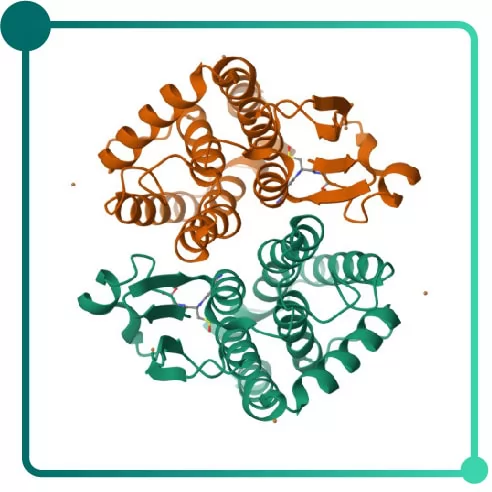
Purification Principle of GST tag protein
Due to the complementarity between glutathione structure and GST binding sites, a specific affinity resin was obtained by coupling glutathione SH functional groups on agarose matrix in R&D.
During the purification process, GST-tagged target proteins will complementarily bind with glutathione ligands. The binding is reversible and enables the elution by adding reduced glutathione to buffer in mild, non-denaturing conditions. Removal of impurities will be achieved by either flow-through or buffer elution, therefore making the separation of target proteins possible.
For the removal of GST tags after purification, both off-column cleavage and on-column cleavage are available.
For on-column cleavage, enzyme cutting can be achieved by adding pre-cutting enzymes (specific to protease sites) in the binding between tag proteins and glutathione. For off-column cleavage, enzyme cutting can be achieved by adding pre-cutting enzymes after elution. Generally speaking, enzymes including PreScission Protease、Thrombin and Factor Xa can be chosen according to the expression vectors used.
Resins for GST tag protein purification
Bestchrom has provided customers with two GST tag protein affinity resins, namely, GST Bestarose 4FF and GST Bestarose 4B to meet the specific purification needs for GST tag proteins in various sizes.
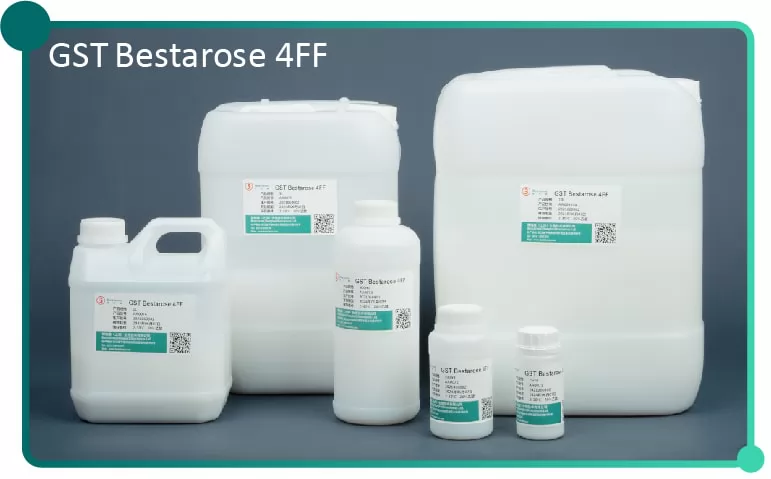
Fig.2 GST tag resin
GST resin technical parameters
|
Resin |
GST Bestarose 4FF |
GST Bestarose 4B |
|---|
|
Matrix |
Highly cross-linked agarose, 4% |
Agarose,4% |
|
Functional groups |
glutathione with 10 carbon atomic spacer arms |
|
Average particle size |
90 um (45-165um) |
|
Max Pressure |
0.3 MPa |
0.01 MPa |
|
Dynamic binding capacity |
~10 mg GST/ml resin |
>5 mg GST/ml resin |
|
Max flow rate |
450 cm/h,BXK16/10,h=5 cm |
75 cm/h,BXK16/10,h=5 cm |
|
Chemical stability |
Common aqueous buffers:1M acetic acid、70% ethanol、6M GuHCl(room temperature ,1h) |
Common aqueous buffers:1M acetic acid、0.1M NaOH、
70% ethanol、6M GuHCl(room temperature,1h) |
|
pH stability |
3-12 |
4-13 |
|
Shipping buffer(4-30°) |
20% ethanol |
Buffer recommendation
Equilibration buffer: 10-20mM PB/50-100mM Tris-HCl + 0.14-0.4M NaCl,pH6.2-8.0
Elution buffer:50mM Tris-HCl+10-60mM reduced glutathione, pH8.0-9.0
Tips: To improve purity of target molecules, add reducing agent in binding buffer and elution buffer, i.e. 1-5 mM DTT. However, this method might compromise yield.
Common problems in GST tag protein purification
Non-binding or weak binding of GST tag proteins
|
Causes |
Recommended solution |
|---|
|
Incorrect GST tag protein expression |
Perform sequencing confirmation on plasmid |
|
Denature of GST tag protein(i.e.ultrasound) |
Use mild mechanical /chemical lysis conditions. For instance, lower KW or use enzymolysis method. |
|
Precipitation due to aggregation of GST tag protein in samples |
Add DTT(1-20mM) to buffer before cell lysis |
|
Low concentration of tag proteins |
Concentrate sample |
|
Tag proteins might have changed the conformation of GST |
Detect the GST binding in the pGEX vectors. Prepare cell ultrasonic lysates with used pGEX(no fusion of target protein). Detect its binding with column, for good binding, it is very possible that tag proteins have changed the formation of GST and therefore reduced the affinity of GST tag proteins. |
|
Insufficient quilibration time |
Increase equilibration time to at least 5CV |
|
High flow rate at sample loading |
Reduce flow rate at sample loading |
Possible reasons for inefficient elution of GST tag proteins
|
Causes |
Recommended solution |
|---|
|
Insufficient glutathione concentration in the elution buffer or oxidized glutathione |
raise glutathione concentration in elution buffer(no higher than 60mN), alternatively, use fresh elution buffer and add DTT in it. |
|
Insufficient elution time |
Increase elution time |
|
Low pH in elution buffer |
Raise pH of elution buffer(8-9) |
|
Low salinity of elution buffer |
Raise salinity of elution buffer, alternatively ,add 0.1% TritonX-100. |
|
Low ionic strength of elution buffer |
Add 0.1-0.2M NaCl to elution buffer. |
|
Non-specific hydrophobic interaction prevents the solubilization and elution of tag proteins |
Add nonionic detergent to elution buffer. For example, 1% of TritonX-100 or 2% of n-octylglucoside |
|
High flow rate at sample loading |
Reduce flow rate at sample loading |
High level of heteroproteins in purified product
|
Causes |
Recommended solution |
|---|
|
Overused resin(surpass resin life cycle), produce relatively high level of non-specific adsorption |
Replace with new resin during purification |
|
Denature of GST tag protein(i.e. ultrasound) |
use mild mechanical /chemical lysis conditions. For instance, lower KW or use enzymolysis method. |
|
Binding between GST tag protein and heteroproteins |
Add in-process washing steps, add salinity of impurity elution buffers. Alternatively, add 1% TritonX-100 to elution buffer or add 5mM DTT in equilibration buffer. |
|
Low salinity of elution buffer |
Raise salinity of elution buffer, alternatively ,add 0.1% TritonX-100. |
|
Low ionic strength of elution buffer |
Add 0.1-0.2M NaCl to elution buffer. |
|
Non-specific hydrophobic interaction prevents the solubilization and elution of tag proteins |
Add nonionic detergent to elution buffer. For example, 1% of TritonX-100 or 2% of n-octylglucoside |
|
High flow rate at sample loading |
Reduce flow rate at sample loading |
Conclusion
Generally speaking, purity of GST tag proteins via one-step affinity chromatography will be higher than that of His tag protein via one-step purification. However, despite of multiple advantages, GST tag proteins also suffer from two disadvantages, 1. High molecular weight, might influence protein function and downstream experiments. 2. Only applicable for soluble protein purification. Thus, it is necessary to choose the suitable chromatography resins according to the property of proteins.



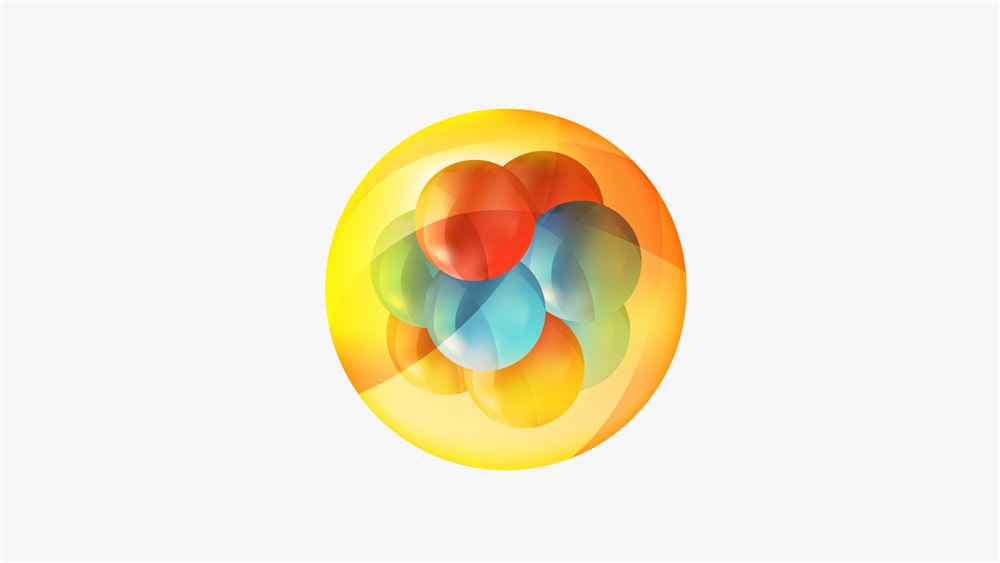

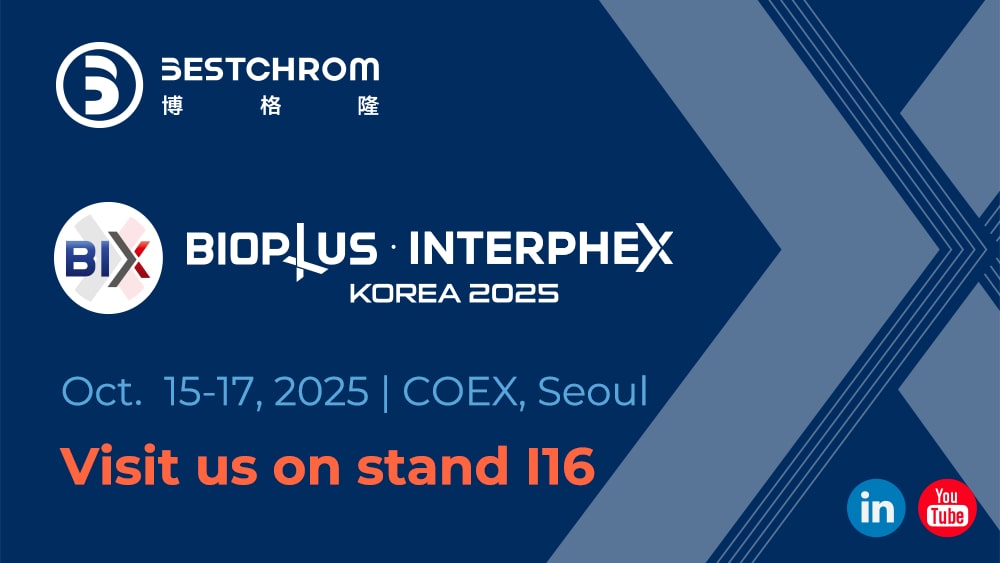

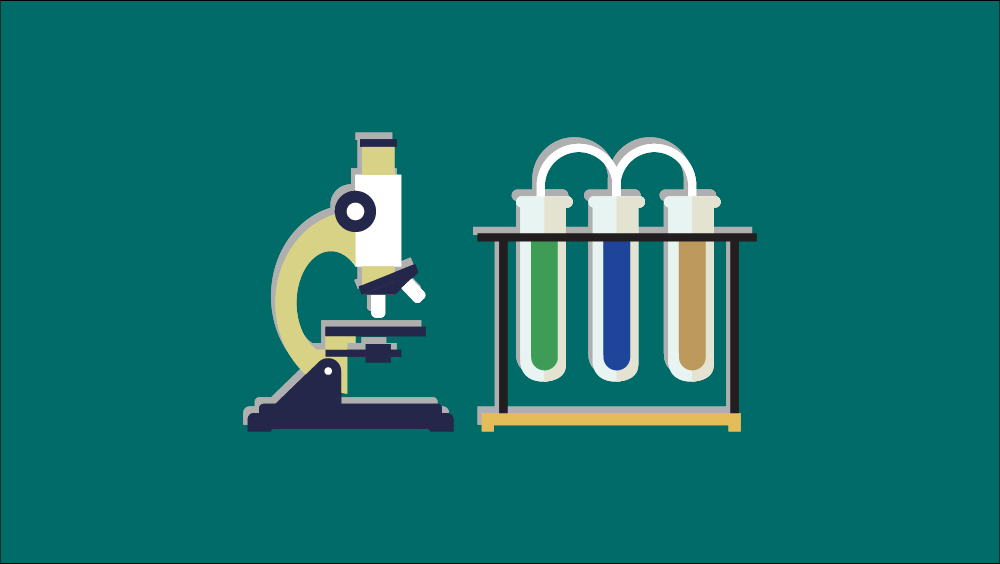

.png)


